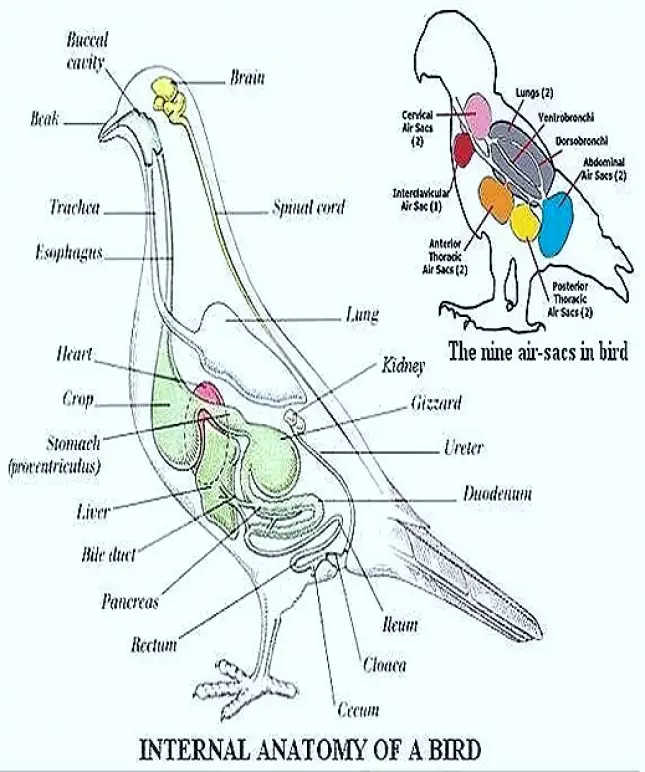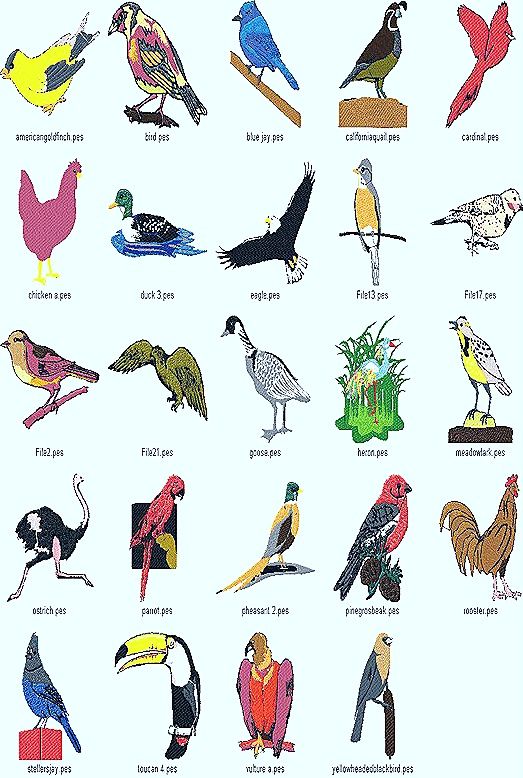Medically reviewed and approved by a board-certified member
Zoology
GENERAL CHARACTERS OF BIRDS (AVES)
By BS MediaTwitter Profile | Updated: Saturday, 01 July 2017 13:47 UTC

AN INTRODUCTION TO AVES (BIRDS)
Birds (AVES) are highly evolved vertebrates. In the Jurassic period of Mesozoic era the Birds first appeared. They evolved from Ornithischian dinosaurs of Reptilian group. In the cretaceous period the birds became modernized.
Birds are bipedal vertebrates. Their fore limbs are modified into wings. Their body is covered by feathers. Hind limbs are strong and they are useful to walk on land. All these characters taking into the consideration in classification of birds.
Birds are adopted for aerial mode of life. Hence the body shows many modifications for aerial mode of life:
The science which deals with birds is called Ornithology. (Also read Branches of Biology)
Birds and reptiles are grouped together in “sauropsida” group.
In the present day world 8590 species of birds are living.
GENERAL CHARACTERS OF BIRDS (AVES)
Aves belongs to
- Phylum: Chordate
- Sub Phylum: Vertebrate
- Group: Gnathostomata
- Class: Aves
Birds arose in the Jurassic period of mesozoic era. Reptiles and Birds are combindly called “Sauropsida”. Birds have become highly, modified due to aerial life and show many differences from Reptiles. The present day living birds are represented by 8,590 species. They are aerial, terrestrial and aquatic.

- Birds are warm blooded, bipedal, feather clawed vertebrates.
- Birds body is divisible into head, neck, Trunk and Tail.
- In Birds Forelimbs are modified into wings (forelimb bears three cIaw less digits wings bear feathers. They are useful for flying.
- In Birds Hind limbs are strong and are useful to walk. They show 4 toes (Neognathae).
- In Birds the wings have no glands, except preen glands or oil gland present at the base tail. It secrets of the oily substance which keeps the feather waterproof.
- In Birds Skull is monocondylic.
- In Birds the lower jaw is made by 5 to 6 bones.
- The modern birds have no teeth.
- In Birds bones are spongy and pneumatic. They are light In weight end strong. They are use full for flying.
- In Birds Posterior caudal vertebrae will united arm a pygostyle. It acts as a rudder. During the flying it helps to change the direction of movement.
- Sternum is broad. It shows a keel. This keel is useful for the attachment of muscles.
- The clavicle and inter clavicle unite to form V shaped furcula. This will keep the wings away.
- In the forelimbs carpals and metacrpals are united to form carpo-metacarpus. Like that — hind limbs tarsal and metatatarsals, united to form Tarso metatarsus.
- The birds digestive system is well developed crop chamber is present. It stores food. Stomach is divided into glandular proventriculus and muscular gizzard
- In birds Anus is absent. Cloaca present. This cloaca is 3 chambered.
- In birds Respiratory system is well developed. The lungs are spongy.
They are non distensible sacs around the lungs. Nine air sacs are present. They are usefull for make body light.
a) lnterr cavicular air sac (1)
b) 1 pair of cervical (2)
c) 1 pair of anterior thoracic air sacs (2)
d) pair of posterior thoracic air sect (2)
e) 1 pair of abdominal air sacs. (2)
They are useful or double respiration. They are also use Make to the body light. - At the base of tracheae a syrinx is present. I has no vocal cords
- Birds or Aves Heart is four chambered..Right arotic arch is present.
- R.B.C. are oval, nucleate and biconcave.
- In birds (aves) Renal parallel system is reduced, or vestigial.
- Birds Kidneys are meta nephrlc. Each kidney is Three lobed. Ureters open into cloaca. Urinary bladder is absent.
- Birds Eyes are well developed. Monocular vision. In the eye comb plate or pecten is present. It protects the retina from sunlight. It also increases the vision.
- Birds Brain is well developed. Cerebral hemispheres and cerebellum are,12 pairs of cranial nerves are present.
- Sexes are separate - Sexual dimorphism is clearly exhibited.
- In the female left ovary and left oviduct are
- Fertilizing is internal.
- Birds are oviparous. They lay big sized eggs.
- During Embryo development extra embryonic membranes
- 13 vertebrae in pelvic region unite to form synsacrum.
End of the article